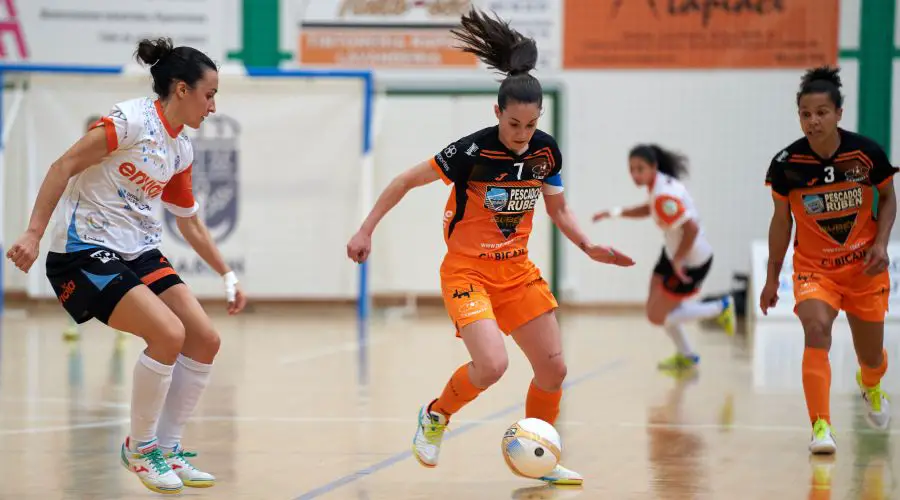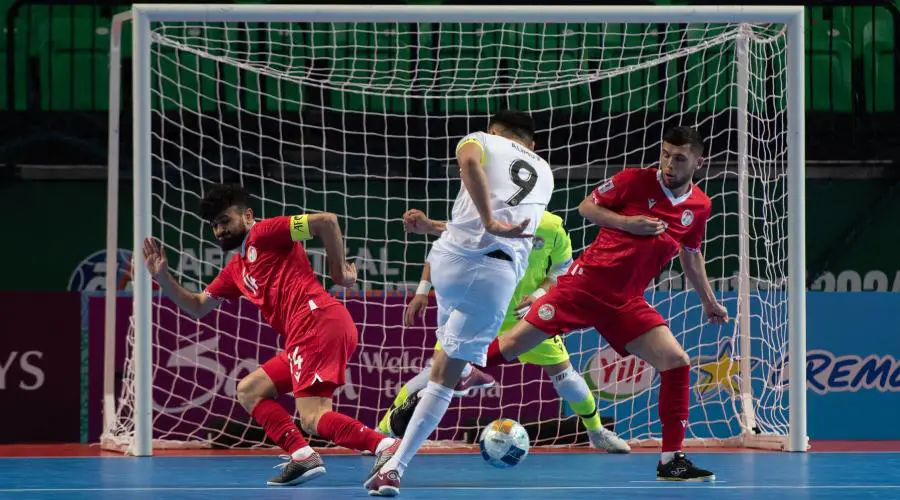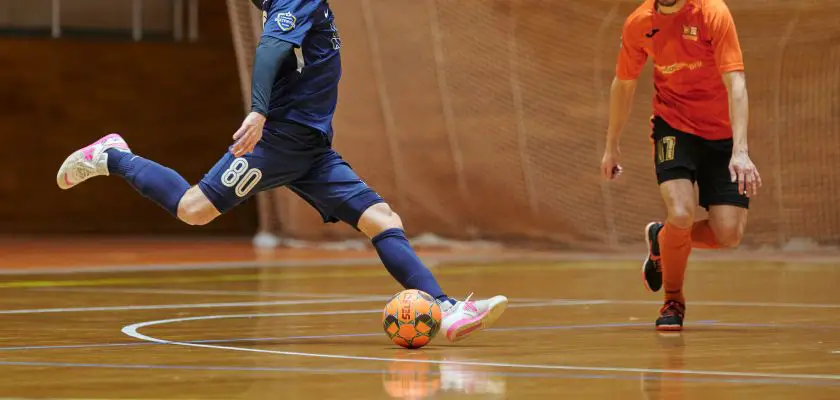Futsal, or indoor soccer, is a sport derived from traditional soccer that has many fans all over the world, especially in Brazil, of course. If you like the sport and are looking for more information about it, you’re in the right place, because we’ve prepared a guide with the futsal positions for you to learn about!
Unlike other sports, futsal doesn’t have such complex details, and the proof of this is that there are only four positions played on the court. They are: goalkeeper, set piece, wing and pivot. In this article, you’ll learn more about how each one works in practice, ready?
Participate in our free Whatsapp community and receive daily tips, news and trivia on more than 50 sports! Click here to join.

Futsal positions: about the sport
So first, let’s understand a little bit about the history of futsal? The sport was born in the 1930s in South America, mainly in Brazil and Uruguay. The intention of the sport’s creator was to adapt traditional soccer to smaller spaces, such as indoor courts.
Then Juan Carlos Ceriani, a physical education teacher from Uruguay, created indoor soccer during a teachers’ congress. He managed to combine elements not only from soccer, but also from basketball, handball and water polo to create futsal.
As a result, futsal soon became a dynamic sport that can be practiced indoors and on a smaller scale.
Indoor soccer spread rapidly throughout South America, especially in Brazil, and today the sport has grown to the point of being recognized by FIFA, which happened in 1971. This was followed by international competitions and the sport’s global popularity.
Now, then, it’s time to find out what the four futsal positions are and learn a little more about them.
Futsal positions: complete list
Check out the four positions in futsal, or indoor soccer:
- Goalkeeper;
- Fixed;
- Ward;
- Pivot.
Positions in futsal: learn more about each one
Now, let’s break down the futsal positions, discovering more about the goalkeeper, set-piece, winger and pivot.
Goalkeeper
In futsal, the goalkeeper is the player responsible for protecting the goal, just like in other sports. This athlete is therefore the only one allowed to use their hands inside the area, unlike the line players, who can only play with their feet.
The existence of the goalkeeper is crucial in the defense of a futsal team, since his mission is to make the best saves and distribute the ball accurately to his teammates. The player who plays this position must also initiate his team’s attacking moves after making a save or receiving the ball from a teammate.
A goalkeeper also needs to analyze his team’s defense, since he has a privileged view of the court and can analyze what is happening. As well as a good eye, futsal goalkeepers need to keep an eye on their opponents in order to predict their movements, exploiting their best reflexes, motor coordination and agility.
Fixed
Fixed players are defensive players, as they play behind other line players. As such, they have the job of intercepting the opposing team’s attacks, disarming the opposition and initiating counter-attacking moves. They can also join the attack in situations where a good strategy is needed.
The defensive midfielder also needs several characteristics to play a good game, especially when it comes to marking a player and trying to steal the ball from the opposition. To do this, they need to have enough skill to be able to disarm the player from the rival team.
The fixed position players also need to know how to take the best long-range shots, making this attack at the best possible moment to catch the other team’s goalkeepers off guard;
The set-pieces also need to do their best to distribute the ball and create the best attacking play for their team.
Wing
Futsal players who play the position of wing must be versatile players who play on the sides of the court, with defensive and offensive responsibilities. Wingers must also be quick and skillful, able not only to dribble past opponents in the best way, but also to deliver precise crosses and score goals.
Basically, then, futsal players on the wing need to know how to create the best goal-scoring opportunities with their talents alone. They can also bet on assist tactics, exploiting the sides of the court, and also making decisive crosses into the box.
The wingers also stand out on the court when it comes to putting pressure on their opponents, intercepting rival passes and disarming players. Players in this position also stand out when it comes to making quick transitions between attack and defense, and for being able to move around the court efficiently.
Pivot
The pivot position is the one in which the player must stay closest to the opponent’s goal. Their aim is to hold the ball up and create space for their teammates, creating the best moves. The pivot is usually a player with a lot of physical strength, as he needs to protect the ball and take the best shot.
The players in the pivot position then have the task of protecting the ball from opposing players. To do this, they need to have a lot of technical skill and stamina. As these players end up opening up space for players from their own team, opponents are always watching their every move to take advantage of this opportunity.
The pivots also stand out for being alert when it comes to returning the quickest passes on the court, creating dynamism in the game and generating even more scoring opportunities.

Futsal positions: complete list
- Goalkeeper;
- Fixed;
- Ward;
- Pivot.
If you enjoyed learning about the positions in futsal and want to find out more about the sport, keep following the site and check out our other articles on the subject.
You can also explore our website for more news, lists, glossaries and much more on a wide variety of sports. Don’t forget to leave a comment!



